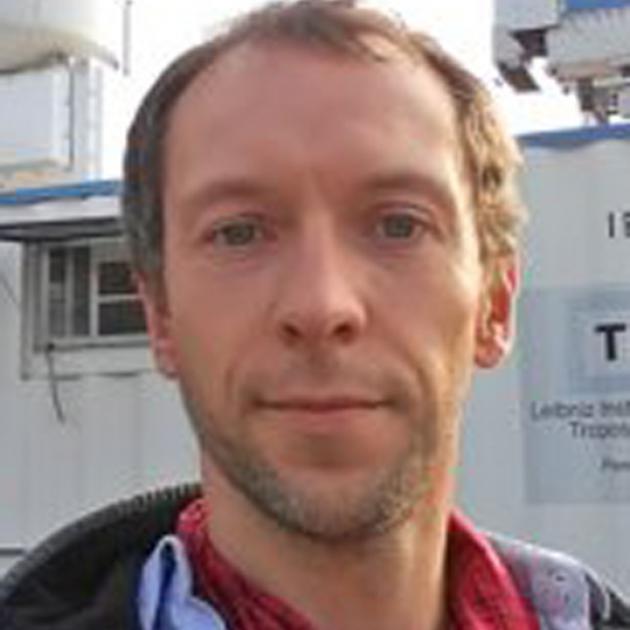Science
New Zealand Launches Laser Research on Aerosols and Clouds

A new atmospheric research project, known as the goSouth-2, is set to commence at the MetService site near Invercargill Airport on September 3, 2023. This initiative aims to study the impact of aerosols—tiny airborne particles—on cloud formation and atmospheric conditions. The project represents a collaboration between several institutions from Germany and New Zealand, including the University of Leipzig and the Leibniz Institute for Tropospheric Research (TROPOS), along with the University of Canterbury and The Air Quality Collective.
Research Focus and Methodology
Five researchers from TROPOS are currently setting up essential equipment at the research site. According to Patric Seifert, a researcher at TROPOS, aerosols enter the atmosphere from various sources, including sea salt, dust, pollen, and particles resulting from smoke or volcanic activity. These aerosols play a crucial role in cloud formation, serving as nuclei for cloud particles to attach to. Dr. Seifert emphasized, “The less aerosol particles are available, the less cloud particles can form, and vice-versa.”
The southern tip of New Zealand, positioned at the northern edge of the Southern Ocean, provides a unique environment for this research. The region’s atmosphere can be exceptionally clean when air masses come from the Antarctic, contrasting sharply with the more polluted conditions that arise from continental air masses coming from Australia. By examining the differences in aerosol content across these air masses, researchers hope to gain insights into how clouds respond to varying aerosol levels.
Significance of the Research
Dr. Seifert noted that current atmospheric and climate models struggle to accurately simulate cloud behavior over the Southern Ocean compared to the northern hemisphere. This discrepancy is thought to be influenced by the differing levels of aerosol pollution between the hemispheres, with the northern hemisphere generally being more polluted and better documented. The research conducted in Invercargill is not only timely but necessary for improving the accuracy of these models.
The logistical advantages of conducting research in Invercargill, including support for equipment and accommodation, further enhance the feasibility of the project. The MetService has already established a solid foundation for atmospheric observations, including long-term records of weather balloon soundings, precipitation measurements, and solar and thermal radiation data.
While most of the research equipment is land-based, residents near Invercargill Airport may notice a green laser beam in the sky. This beam is part of the lidar (light detection and ranging) systems used to investigate aerosol concentrations. The fixed beam has been communicated to airport staff, ensuring awareness of its presence during the research period.
Researchers will also utilize radar systems to detect and analyze clouds and precipitation, providing further depth to their studies. The TROPOS team will be on site for an estimated 18 months, while an additional group of around 15 researchers will analyze data back in Germany. This follows the success of the goSouth-1 project in 2022, which was conducted at Pahia, approximately 50 kilometers from Invercargill.
The goSouth-2 project is anticipated to contribute significantly to the understanding of aerosol-cloud interactions, with potential implications for climate modeling and atmospheric science on a global scale.
-

 World4 months ago
World4 months agoTest Your Knowledge: Take the Herald’s Afternoon Quiz Today
-

 Sports4 months ago
Sports4 months agoPM Faces Backlash from Fans During Netball Trophy Ceremony
-

 Lifestyle4 months ago
Lifestyle4 months agoDunedin Designers Win Top Award at Hokonui Fashion Event
-

 Entertainment4 months ago
Entertainment4 months agoExperience the Excitement of ‘Chief of War’ in Oʻahu
-

 Sports4 months ago
Sports4 months agoLiam Lawson Launches New Era for Racing Bulls with Strong Start
-

 World5 months ago
World5 months agoCoalition Forms to Preserve Māori Wards in Hawke’s Bay
-

 Health4 months ago
Health4 months agoWalking Faster Offers Major Health Benefits for Older Adults
-

 Lifestyle4 months ago
Lifestyle4 months agoDisney Fan Reveals Dress Code Tips for Park Visitors
-

 Politics4 months ago
Politics4 months agoScots Rally with Humor and Music to Protest Trump’s Visit
-

 Top Stories5 months ago
Top Stories5 months agoUK and India Finalize Trade Deal to Boost Economic Ties
-

 Health2 months ago
Health2 months agoRadio Host Jay-Jay Feeney’s Partner Secures Visa to Stay in NZ
-

 World5 months ago
World5 months agoHuntly Begins Water Pipe Flushing to Resolve Brown Water Issue









